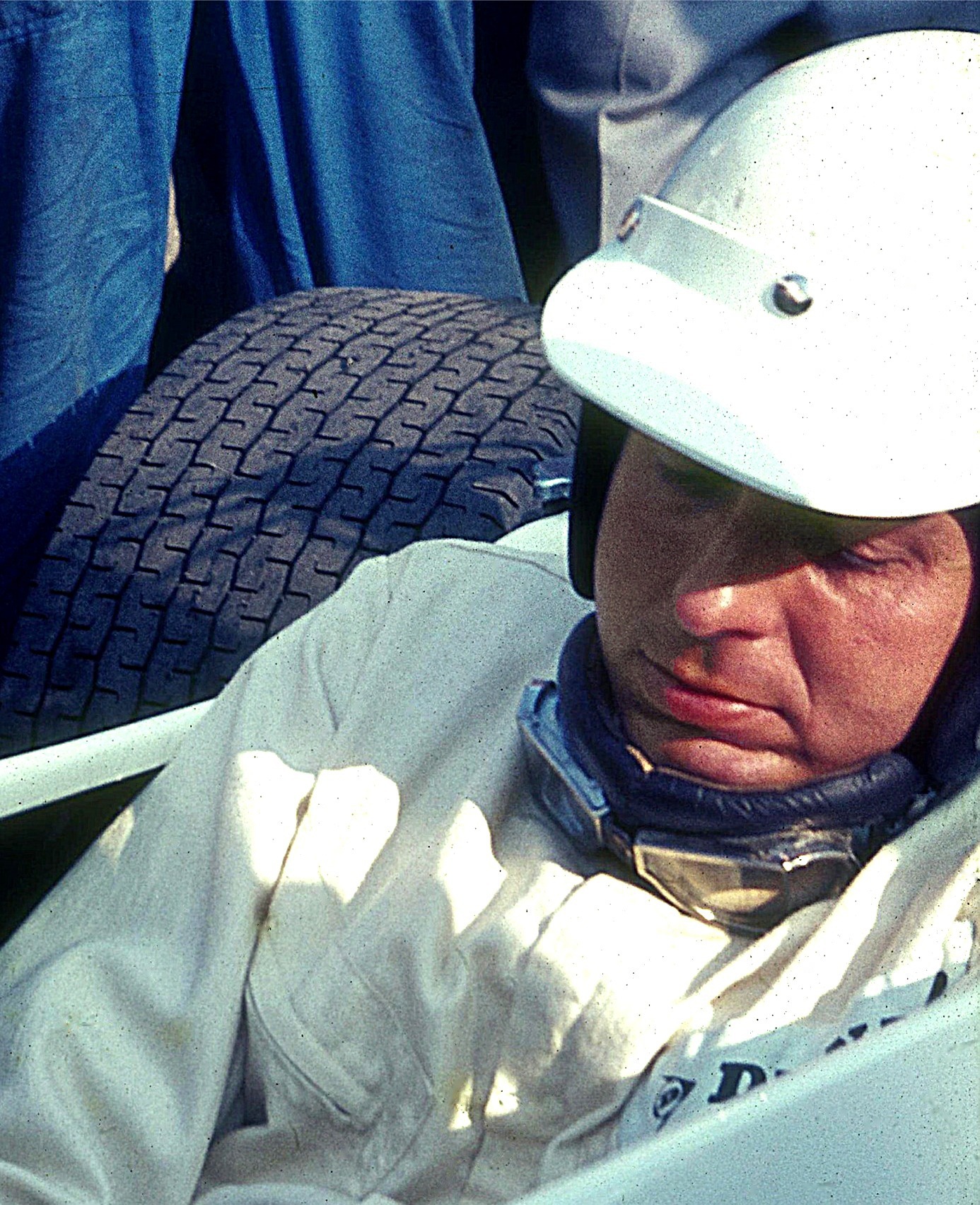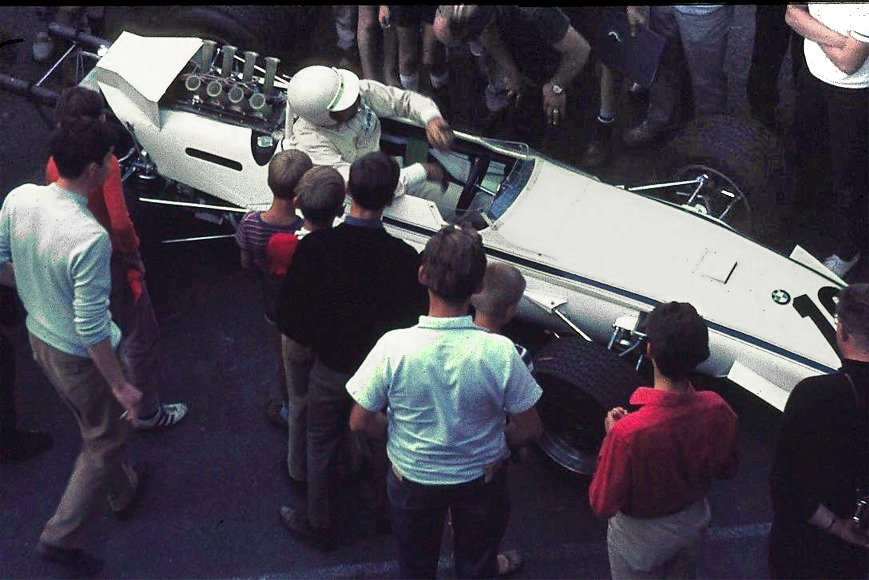1. Overview
Hubert Hahne (Hubert Hahneˈhuːbɛʁt ˈhaːnəGerman) was a notable German racing driver who achieved significant success in various motorsport disciplines during the 1960s. He is particularly renowned for his pioneering achievements in touring car racing, including setting historic lap records at the formidable Nürburgring circuit. Beyond his racing career, Hahne extended his influence into the automotive industry, notably as the president of a Lamborghini dealership in Germany, where he contributed to the design and customization of special Lamborghini Jota models. He also participated in Formula Two and competed in five Formula One World Championship Grands Prix.
2. Early Life and Background
Hubert Hahne's formative years laid the groundwork for both his technical aptitude and his later career in motorsports and business.
2.1. Family and Childhood
Hubert Hahne was born on March 28, 1935, in Moers, North Rhine-Westphalia, Germany. He was one of six siblings, including his brothers Wilhelm Hahne, Bernd Hahne, Norbert Hahne, and Armin Hahne, who also became a racing driver. His sisters were Christel and Gerda; Gerda was the mother of Jörg van Ommen, another prominent racing driver, making Hahne his uncle. From an early age, Hahne developed a deep affection for horses, a passion he maintained alongside his technical aspirations.
2.2. Education and Early Career
After completing his schooling, Hahne pursued a commercial apprenticeship. Driven by a desire to become a technician, he later embarked on a second apprenticeship at the age of 23, training as a car mechanic. Concurrently, he worked in his father's tobacco wholesale business, which also managed trotter horses. His comprehensive training in both commerce and automotive mechanics proved instrumental in his later ventures, including operating a BMW tuning company and becoming the sole importer of Lamborghini models in Germany.
3. Racing Career
Hubert Hahne's primary professional focus was on motorsports, where he distinguished himself across touring car, Formula Two, and Formula One categories.
3.1. Touring Car Achievements
Hahne achieved considerable success in touring car racing, including in the European Touring Car Championship. In 1963, he celebrated his first major success by winning the European Touring Car Cup behind the wheel of a BMW 700. The following year, Hahne dominated the German Circuit Championship, winning an impressive 14 out of 16 rounds with a BMW 1800 TI. His most successful year in touring cars was 1966, when he secured another European Championship. That year, driving a BMW New Class 2000 TI in a support race for the 1966 German Grand Prix, he became the first touring car driver to complete a lap of the Nürburgring in under 10 minutes, setting a record of 9:58.5. This was a significant achievement, especially considering that an Alfa Romeo GTA had set the Nürburgring touring car lap record at 10:08.9 just a month prior during the six-hour "Großer Preis der Tourenwagen" on July 3, 1966. Furthermore, in 1966, Hahne also won the Spa-Francorchamps 24-hour race alongside Jacky Ickx. He also competed in the British Saloon Car Championship.
3.2. Formula Two Activities
Hahne was a successful competitor in Formula Two racing, establishing two world records at Autodromo Nazionale Monza. He competed against prominent drivers such as Jacky Ickx and Ronnie Peterson. In 1969, Hahne finished as the runner-up in the European Formula Two Championship. Formula Two cars occasionally participated in the same events as Formula One cars at the old and very long Nürburgring circuit, offering opportunities for drivers like Hahne to enter the German Grand Prix. In such events, the Formula Two section was scored separately, meaning these drivers could not earn World Championship points.
3.3. Formula One Activities
Hubert Hahne participated in five Formula One World Championship Grands Prix. Two of these appearances, at the 1966 and 1969 German Grands Prix, were at the wheel of Formula Two cars, running in special sections of those events that did not count towards World Championship points.
His true Formula One debut came at the 1967 German Grand Prix, where he drove a Lola T100 chassis equipped with a 2.0-litre 16-valve BMW engine. This configuration allowed the BMW factory team to run the car in Formula One as a means of national encouragement. Hahne retired from this race on lap 7 due to a suspension failure. The following year, at the 1968 German Grand Prix, he finished 10th in a similar Lola T102 chassis with a 1.6-litre BMW M12/1 engine.
Hahne intended to compete in the 1969 German Grand Prix with a BMW 269 Formula Two car, but he withdrew before the start of the event. This withdrawal was a direct result of the fatal accident suffered by his team-mate Gerhard Mitter during practice.
For the 1970 Formula One season, Hahne acquired a March 701 car. However, he failed to qualify for the 1970 German Grand Prix, which was held at the Hockenheimring that year. Hahne publicly stated his belief that his March chassis and Cosworth DFV engine were among the worst produced by the manufacturers that year. Later, Ronnie Peterson demonstrated the potential of that specific car by achieving adequate times at Silverstone Circuit, suggesting that Hahne's issues may have been more complex.
3.4. Retirement from Racing
Following his struggles in the 1970 Formula One season and his failure to qualify for the German Grand Prix, Hubert Hahne concluded his professional motor racing career that same year.
4. Post-Racing Career
After retiring from competitive racing, Hubert Hahne transitioned into various business ventures within the automotive industry, leveraging his deep knowledge and passion for cars.
4.1. Lamborghini Dealership and Design Influence
A significant part of Hahne's post-racing career involved his role as the president of the official Lamborghini dealership in Germany. In this capacity, he not only managed the import and sale of Lamborghini models but also exercised considerable influence over vehicle design and customization. Notably, Hahne commissioned the creation of his own unique Lamborghini Miura Jota SVJ, specifically chassis number 4860. Furthermore, he applied his keen aesthetic and engineering sense to customer vehicles, such as a Lamborghini Jota SVR (chassis number 3781). For this car, Hahne oversaw the extreme enlargement of its rear fenders and, through his own workshop, added a distinctive, custom-designed rear wing. His contributions left a lasting impact on automotive culture, showcasing his exceptional taste and influence beyond the race track.
4.2. Other Business Ventures
In addition to his work with Lamborghini, Hahne engaged in other automotive-related enterprises. He operated a BMW tuning company, which further utilized his expertise as a car mechanic. He also tested Honda motorcycles for "Powerslide" magazine, demonstrating his continued engagement with the world of performance vehicles.
5. Personal Life and Hobbies
Hubert Hahne maintained an active and varied personal life alongside his professional endeavors. His hobbies included flying, swimming, and cycling, reflecting a continued pursuit of dynamic activities. He also had an interest in photography and collecting icons. In 1970, he married the German actress Diana Körner, though they later divorced after several years. In his later life, Hahne resided in Italy for an extended period before his passing.
6. Death
Hubert Hahne died on April 24, 2019, at the age of 84. He passed away in a nursing home in Düsseldorf, North Rhine-Westphalia, Germany.
7. Racing Record
Hubert Hahne's career saw him compete in various high-profile championships. The following tables detail his performance in Formula One, European Formula Two, and the British Saloon Car Championship.
7.1. Complete Formula One World Championship Results
| Year | Entrant | Chassis | Engine | 1 | 2 | 3 | 4 | 5 | 6 | 7 | 8 | 9 | 10 | 11 | 12 | 13 | World Drivers' Championship | Pts |
|---|---|---|---|---|---|---|---|---|---|---|---|---|---|---|---|---|---|---|
| 1966 | Tyrrell Racing Organisation | Matra MS5 (F2) | BRM P80 1.0 L4 | MON | BEL | FRA | GBR | NED | GER 9 | ITA | USA | MEX | NC | 0 | ||||
| 1967 | Bayerische Motoren Werke AG | Lola T100 | BMW M10 2.0 L4 | RSA | MON | NED | BEL | FRA | GBR | GER Ret | CAN | ITA | USA | MEX | NC | 0 | ||
| 1968 | Bayerische Motoren Werke AG | Lola T102 | BMW M12/1 1.6 L4 | RSA | ESP | MON | BEL | NED | FRA | GBR | GER 10 | ITA | CAN | USA | MEX | NC | 0 | |
| 1969 | Bayerische Motoren Werke AG | BMW 269 (F2) | BMW M12/1 1.6 L4 | RSA | ESP | MON | NED | FRA | GBR | GER DNS | ITA | CAN | USA | MEX | NC | 0 | ||
| 1970 | Hubert Hahne | March 701 | Ford Cosworth DFV 3.0 V8 | RSA | ESP | MON | BEL | NED | FRA | GBR | GER DNQ | AUT | ITA | CAN | USA | MEX | NC | 0 |
7.2. Complete European Formula Two Championship Results
| Year | Entrant | Chassis | Engine | 1 | 2 | 3 | 4 | 5 | 6 | 7 | 8 | 9 | 10 | Championship position | Pts |
|---|---|---|---|---|---|---|---|---|---|---|---|---|---|---|---|
| 1967 | Bayerische Motoren Werke | Lola T100 | BMW | SNE DNQ | SIL | NÜR 4 | HOC | TUL | JAR | ZAN | PER | BRH 9 | VAL Ret | 12th | 7 |
| 1968 | Bayerische Motoren Werke | Lola T102 | BMW | HOC | THR | JAR | PAL | TUL | ZAN | PER | HOC 7 | VAL 10 | NC | 0 | |
| 1969 | Bayerische Motoren Werke | Lola T102 | BMW | THR 12 | HOC 2 | NÜR 4 | JAR 5 | 2nd | 28 | ||||||
| BMW 269 | TUL 7 | PER DNS | VAL Ret | ||||||||||||
| 1970 | Bayerische Motoren Werke | BMW 269 | BMW | THR DNQ | HOC 4 | BAR DNQ | ROU DNQ | 13th | 3 | ||||||
| BMW 270 | PER Ret | TUL | IMO | HOC |
7.3. Complete British Saloon Car Championship Results
(Races in bold indicate pole position; races in italics indicate fastest lap.)
| Year | Team | Car | Class | 1 | 2 | 3 | 4 | 5 | 6 | 7 | 8 | 9 | 10 | 11 | Championship position | Pts | Class |
|---|---|---|---|---|---|---|---|---|---|---|---|---|---|---|---|---|---|
| 1968 | Malcolm Gartlan Racing | Ford Falcon Sprint | BRH | THR | SIL | CRY | MAL | BRH ovr:2 cls:1 | SIL | CRO | OUL | BRH | BRH | 28th | 9 | 6th |
8. Legacy and Impact
Hubert Hahne's legacy is primarily marked by his groundbreaking achievements in motorsport, particularly his indelible mark on the Nürburgring. His feat of being the first touring car driver to complete a lap of the challenging circuit in under ten minutes showcased both his skill and the potential of modified production cars. This record significantly contributed to the legend of both Hahne and the Nürburgring itself. Beyond the track, his post-racing career, especially his leadership of a Lamborghini dealership and his direct involvement in the customization and design of specific Jota models, demonstrated a lasting commitment to automotive excellence and left a unique mark on the world of high-performance cars. He is remembered as a versatile driver whose influence extended into the broader automotive culture.

